- 20.5 MySQL Connector/C++
- 20.5.1 MySQL Connector/C++ Binary Installation
- 20.5.2 MySQL Connector/C++ Source Installation
- 20.5.3 MySQL Connector/C++ Building Windows applications with Microsoft Visual Studio
- 20.5.4 MySQL Connector/C++ Building Linux applications with NetBeans
- 20.5.5 MySQL Connector/C++ Getting Started: Usage Examples
- 20.5.6 MySQL Connector/C++ Tutorials
- 20.5.7 MySQL Connector/C++ Debug Tracing
- 20.5.8 MySQL Connector/C++ Usage Notes
- 20.5.9 MySQL Connector/C++ Known Bugs and Issues
- 20.5.10 MySQL Connector/C++ Feature requests
- 20.5.11 MySQL Connector/C++ Support
- 20.5.12 MySQL Connector/C++ FAQ
MySQL Connector/C++ is available as a static or dynamic library to use with your application. This section looks at how to link the library to your application.
Note
To avoid potential crashes the build configuration of MySQL Connector/C++ should match the build configuration of the application using it. For example, do not use the release build of MySQL Connector/C++ with a debug build of the client application.
Static library
The MySQL Connector/C++ static library file is
mysqlcppconn-static.lib. This needs to be
statically linked with your application. You also need to link
against the files libmysql.dll and
libmysql.lib. Once linking has been
successfully completed, the application will require access to
libmysql.dll at run time.
Dynamic library
The MySQL Connector/C++ dynamic library file is
mysqlcppconn.dll. In order to build your
client application you need to link it with the file
mysqlcppconn.lib. At run time the application
will require access to the files
mysqlcppconn.dll and
libmysql.dll.
Building a MySQL Connector/C++ application with Microsoft Visual Studio
Initially, the procedure for building an application to use either the static or dynamic library is the same. You then carry out some additional steps depending on whether you want to build your application to use the static or dynamic library.
-
Select File, New, Project from the main menu.
-
In the wizard select Visual C++, Win32. From Visual Studio Installed Templates select the application type Win32 Console Application. Enter a name for the application, and then click OK, to move to the Win32 Application Wizard.
-
In the Win32 Application Wizard, click on Application Settings and ensure the defaults are selected. The radio button Console application, and the checkbox Precompiled headers will be selected. Click Finish to close the wizard.
-
From the drop down list box on the toolbar, change from the default Debug build to the Release build.
-
From the main menu select Project, Properties. This can also be accessed using the hot key ALT + F7.
Under Configuration Properties, open the tree view.
-
Select C++, General in the tree view.
-
You now need to ensure that Visual Studio can find the MySQL include directory. This directory includes header files that can optionally be installed when installing MySQL Server.
-
Then in the Additional Include Directories text field, add the MySQL
include/directory. -
You will also need to set the location of additional libraries that Visual Studio will need in order to build the application. These are located in the MySQL
lib/optdirectory, a sub-directory of the MySQL Server installation directory. -
In the tree view open Linker, General, Additional Library Directories.
-
Add the
lib/optdirectory into the Additional Library Directories text field. This allows the library filelibmysql.libto be found.
The remaining steps depend on whether you are building an application to use the MySQL Connector/C++ static or dynamic library. If you are building your application to use the dynamic library go here. If you are building your application to use the static library, carry out the following steps:
-
Then open Linker, Input, Additional Dependencies.
-
Enter
mysqlcppconn-static.libandlibmysql.lib. -
By default
CPPCONN_PUBLIC_FUNCis defined to declare functions to be compatible with an application that calls a DLL. If building an application to call the static library, you must ensure that function prototypes are compatible with this. In this caseCPPCONN_PUBLIC_FUNCneeds to be defined to be an empty string, so that functions are declared with the correct prototype.In the Project, Properties tree view, under C++, Preprocessor, enter
CPPCONN_PUBLIC_FUNC=into the Preprocessor Definitions text field.Note
Make sure you enter
CPPCONN_PUBLIC_FUNC=and notCPPCONN_PUBLIC_FUNC, as it needs to be defined as an empty string.
If building an application to use the MySQL Connector/C++ dynamically linked library carry out these steps:
Under Linker, Input, add
mysqlcppconn.libinto the Additional Dependencies text field.-
The application will need to access the MySQL Connector/C++ Dynamic Linked Library at run time. Therefore,
mysqlcppconn.dllneeds to be in the same directory as the application executable, or somewhere on the system's path.Copy
mysqlcppconn.dllto the same directory as the application. Alternatively, extend thePATHenvironment variable usingSET PATH=%PATH%;C:\path\to\cpp. Alternatively, you can copymysqlcppconn.dllto the Windows installation Directory, typicallyc:\windows.

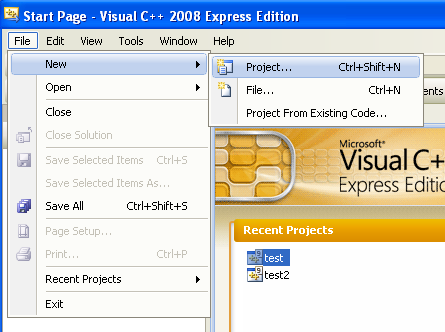
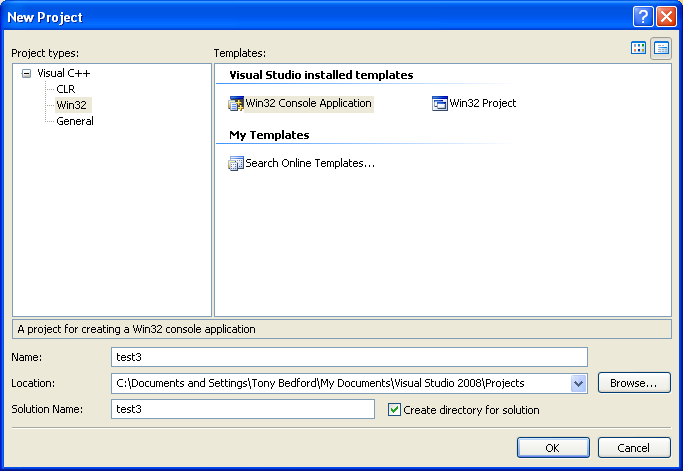
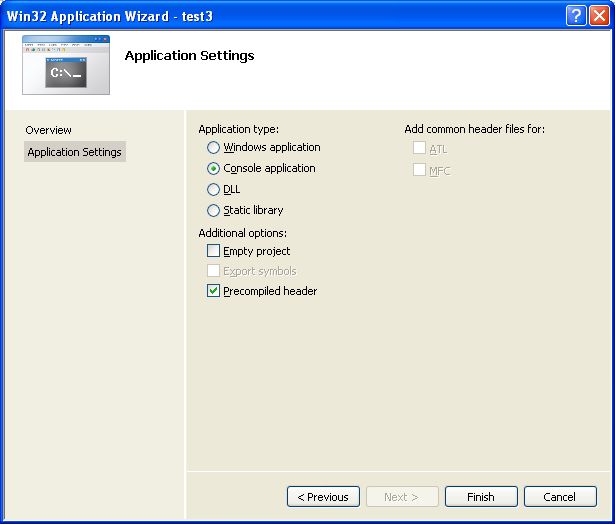

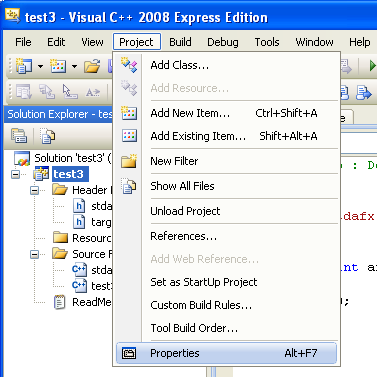

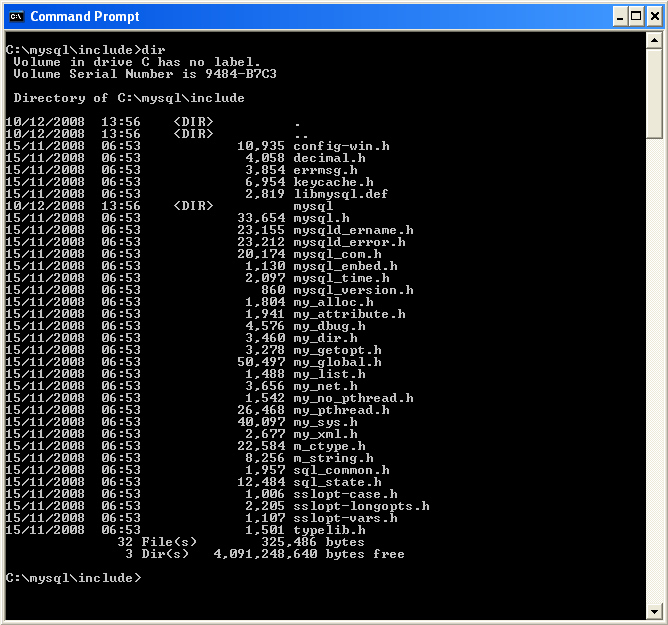
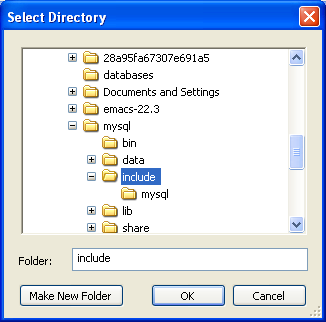
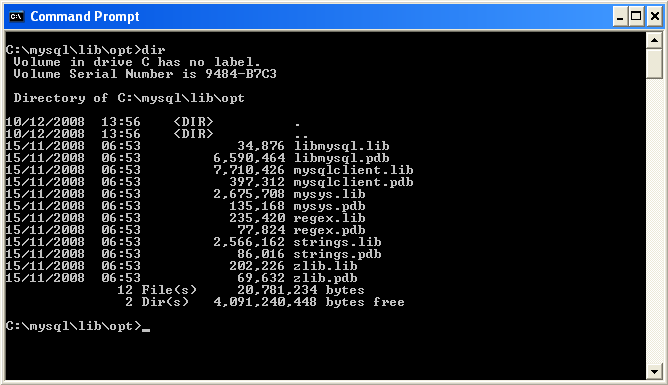
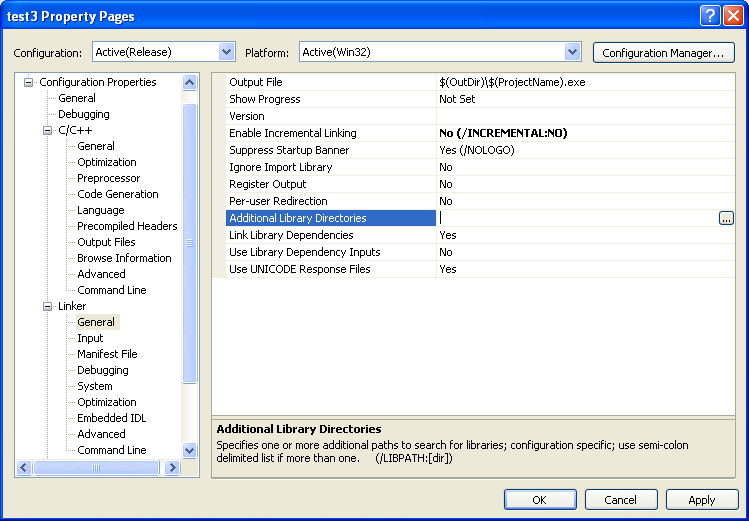
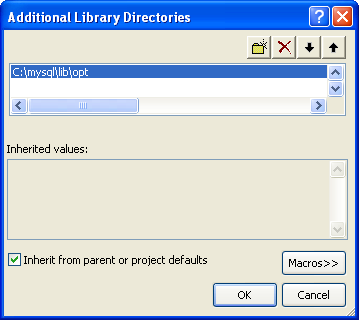
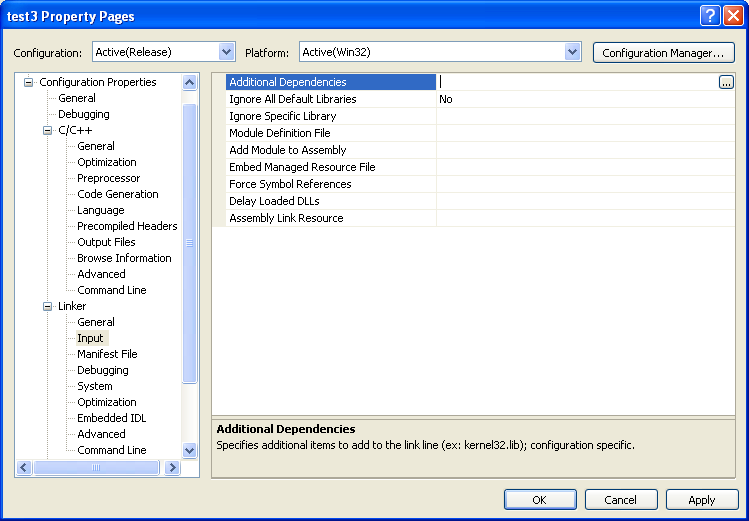
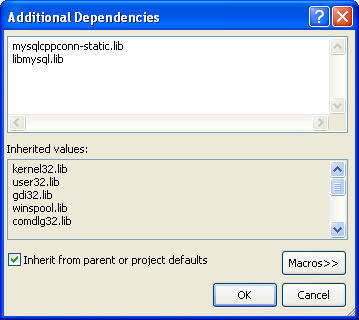
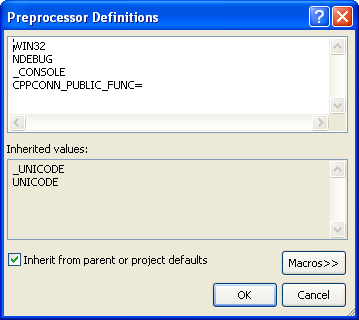
User Comments
Add your own comment.